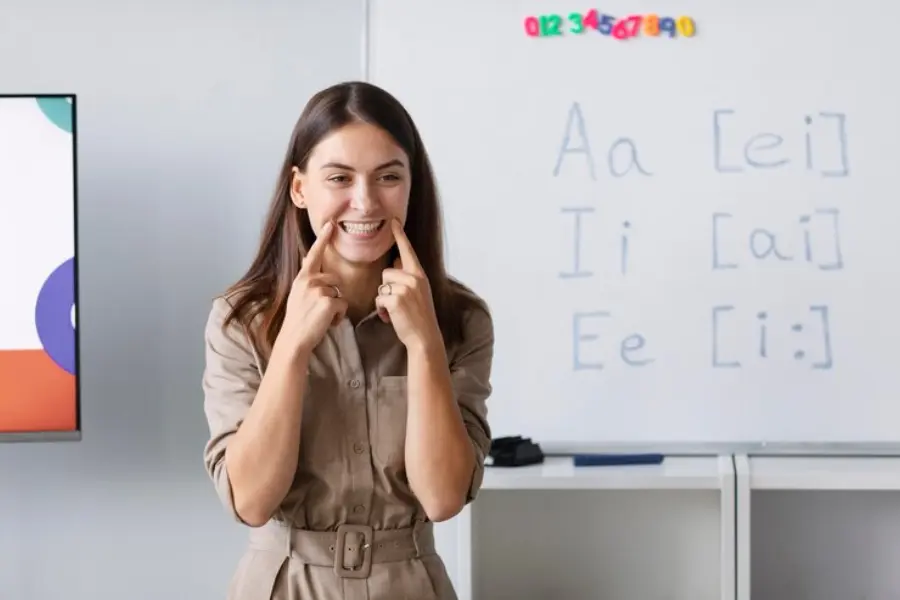Learn to Read Phonics

Source: maloointernationalschool
Learn to Read Phonics
Unlock the door to wisdom and confidence by learning to read. Learning to Read Phonics using sound-based practices makes this journey effortless. With Learn to Read Phonics, reading becomes natural and independent, building a robust foundation for a lifetime of wisdom. Whether you’re a parent, teacher, or learner, this methodology can make reading more effortless and pleasurable.
For details of Phonics Course for Teachers, Call / Whatsapp on +918104606573 / +919869546913.
Click Here, to download the brochure of Phonics Course for Teachers!
Table of Content
How to Learn Phonics Step by Step?
Learn to Read Phonics is essential for developing reading and writing skills. It helps children associate letters with sounds, enhancing word recognition and fluency. Vidhyanidhi Education Society (Govt. Regd.) offers a Phonics Course for Teachers to prepare educators and parents with effective phonics instruction methods.
How to Learn Phonics Step by Step:
Step 1: Understand Letter Sounds
- Focus on letter sounds before letter names.
- Use graphic and auditory learning resources for reinforcement.
- Involve children in exercises that help them recognize sounds in words.
Step 2: Introduce Letter Formation
- Teach writing letters while pronouncing their sounds.
- Use tracing, air writing, and sensory activities.
- Connect letters with familiar objects for better recall.
Step 3: Blend Sounds into Words
- Start with simple CVC words like “cat” and “dog.”
- Encourage sound stretching before blending.
- Use interactive phonics games for engagement.
Step 4: Familiarize Digraphs and Blends
- Familiarize common digraphs (sh, ch, th, etc.) and blends (bl, gr, st, etc.).
- Reinforce through word lists and phonics songs.
- Pinpoint these patterns in reading exercises.
Step 5: Teach Long Vowels and Silent ‘E’ Rule
- Teach how vowel sounds are altered with the magic ‘e’ (cap → cape).
- Use word families for reinforcement.
- Read phonics-based stories and narratives to develop fluency.
Step 6: Strengthen Skills through Practice
- Use phonics readers and word-building exercises.
- Promote independent reading.
- Use phonics in writing exercises.
A Phonics Teacher Training Course provides methodical approaches to Learn to Read Phonics effectively. It includes practical teaching techniques, blending strategies, and reading fluency development. By joining a Phonics Course for Teachers, educators can Teach Reading to children by helping them Learn to Read Phonics effortlessly and create a potent literacy foundation for them.

Source: freepik
How to Teach a Kid to Read?
It requires a stepwise and innovative approach to Teach Reading to a kid. With proficient phonemic familiarity, sight words, routine practice, etc., parents and educators can assist children to Learn to Read Phonics and build a strong basis for literacy.
Teach a Kid to Read effectively using the following structured approach:
Develop Phonemic Understanding
- Prior to introducing letters, help children to identify individual sounds in words. This skill is essential for decoding and spelling.
- Play sound games, like identifying the foremost sound in a word.
- Clap for each sound in a word.
- Use rhyming activities to strengthen sound recognition.
Teach Letter Sounds (Phonics)
- Once children can hear and differentiate sounds, introduce letter-sound relationships.
- Familiarize letter names along with their related sounds.
- Use flashcards, songs, and multisensory techniques for better understanding.
- Practice blending sounds to form simple words.
Teach Sight Words
- Sight words are high-frequency words that children should recognize instantly without cracking into individual sounds.
- Start with common words like “the,” “is,” “to,” “and,” etc.
- Use flashcards and word quests to support recognition.
- Incorporate these words into daily reading practice.
Read Together Regularly
- Reading with a child is one of the most effectual methods to enhance literacy.
- Choose age-appropriate books with easy text and gripping pictures.
- Pinpoint to words as you read to amplify word recognition.
- Ask questions to build comprehension skills.
Practice Decoding Skills
- Help children crack down unfamiliar words into discrete sounds to read independently.
- Encourage them to sound out each letter before blending.
- Model the process by reading audibly and explaining decoding strategies.
- Provide books that match their phonics level for gradual progress.
Make Learning Interesting
- Children learn best when they are interested and keen about reading.
- Use interactive readers with textures, flaps, or audio features.
- Play reading games like matching words to pictures.
- Celebrate progress to build confidence and motivation.
Promote Independent Reading
- As children gain confidence, give them prospects to read on their own.
- Provide books at their reading level to avert frustration.
- Help Learn to Read Phonics by creating a cozy reading space to encourage regular practice.
- Let them pick books based on their interests.
With this approach and keeping reading comforting, children Learn to Read Phonics and establish themselves for success in school and beyond. Consistency and stimulation play a key role in making reading a lifelong habit.

Source: theguardian
What is the Best Method to Teach Reading?
It requires a methodical and research-backed approach to Teach Reading to a child. Studies suggest that a methodical phonics-based approach is the Best Method to Teach Reading. This practice explicitly associates letters with their sounds, helping students interpret words stepwise. This “bottom-up” strategy builds a firm foundation for reading proficiency and comprehension.
Key Elements of an Effective Reading Instruction:
Explicit Instruction
- Directly teach letter-sound relationships with clear examples.
- Use stepwise guidance to help children identify, blend, and interpret words and Learn to Read Phonics.
- Reinforce concepts with structured exercises and activities.
Gradual Progression
- Start with basic letter sounds and simple words before introducing complex structures.
- Move from short, decodable words to more advanced vocabulary.
- Introduce sentence reading gradually, helping students gain confidence.
Engaging Materials
- Use multicolored books, phonics contests, and interactive activities.
- Pick age-appropriate content that retains children’s interest.
- Integrate stories, verses, and songs to make learning pleasurable.
Reading Audibly for Fluency
- Read to children regularly to expose them to rich vocabulary and sentence structures.
- Model proper articulation, expression, and intonation.
- Facilitate students to read aloud to build confidence and fluency.
Practice and Repetition
- Provide regular reading chances to support learning.
- Use flashcards, phonics drills, and writing exercises to strengthen skills.
- Promote repeated readings of familiar books to enhance fluency.
The Best Method to Teach Reading is to integrate phonics instruction with engaging practice. A well-organized approach with meticulous teaching, gradual advancement, and interactive understanding helps children extend proficient reading skills. Students gain confidence and a lifelong passion for books by making reading a consistent and enjoyable activity!
Master Phonics & transform young readers! Join Vidhyanidhi Education Society’s Phonics Course for Teachers today!
For details of Phonics Course for Teachers, Call / Whatsapp on +918104606573 / +919869546913.
Click Here, to download the brochure of Phonics Course for Teachers!
FAQs
What is phonics for learning to read?
Phonics is an approach that teaches letter-sound affinities, helping learners interpret words by blending sounds and enhancing reading proficiency and comprehension.
What age is good for phonics?
Phonics instruction is ideal for children aged 3-6, as early exposure builds robust reading skills, but it can benefit older learners who need aid.




